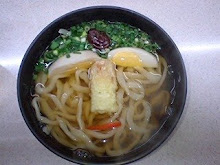On March 11, at 2:45 JST, a 9.0 earthquake struck northeast Japan. Within minutes, large portions of human civilization were obliterated by the power of that earthquake and a tsunami that reached heights of thirty to ten feet. Whole cities and towns were swept away such as Sendai, Ishinomaki, Miyako, and Soma. All that remain are debris of homes, scattered vehicles, and empty areas where buildings once stood.
The images of floating houses, cars adrift, and debris aflame surging with the ocean water into the farmlands of Tohoku flashed across television screens across the world. The images hit closer to home than the disasters that hit Haiti in 2009 and the regions along the Indian Ocean after the 2004 tsunami. Having lived in Japan for three and a half years, seeing those devastated regions reminded me of the areas of Japan that I visited and lived. Sleepy villages populated with fishermen, day workers, parents, children, grandparents along the coast. Cities sitting on the coast, opening to the ocean through ports, with office workers milling through the streets to their offices or a noodle shop for a late lunch.
The current death toll estimates have reached 20,000 persons, with thousands still missing in several towns.
An illustration of this loss of life is captured in a photograph of backpacks collected in Ishinomaki, Miyagi prefecture. There are red and blue backpacks, splattered with mud, many still have the small stuffed animals of the student's favorite TV or comic characters attached. The bright colors contrast with the sober scene of the piled packs with no children around. Those students who once walked to their school, with their small charm's bells jingling in the morning air are unseen; only 24 of the 84 students from Okawa Elementary School have been found.
Stripped of the particularities of one's own culture, by the awesome power of the natural world, there are no differences among human beings. There is a need to reunited with family or loved ones; a desire to return home; the need for shelter and warmth; a need for the basic necessities of food and water.
There is also the solidarity in humans reaching out to help their fellow human in time of disaster. The international community reached out to Japan to assist; the United States launched Operation Tomodachi, a joint US Navy and Japanese Self Defense Forces operation to assist those in Tohoku; Korean, Chinese, British, and Californian firefighters trained in post-earthquake rescue operations flew to assist in searching for survivors; and donations to humanitarian organizations from those across the world.
Here at the Valparaiso University, efforts have begun to help raise money for those affected by the earthquake. The Undergraduate students held a prayer service at the Chapel of Resurrection and collected donations during the Bach Collegum Japan concert.
How can the Law School community chip in to help? Right now I along with other student organization leaders are planning several fund raising events, ranging from food sales, to collection jars, to collaborating with other planned events to help raise money for the Japanese victims. One event coming up is collaboration with the VUSL Running Club's annual Ambulance Chase. If you are unable to donate money, understandable since we are all in the same debt boat together, there is still a need for around fifteen volunteers to help with various duties during the race.
Other ways one can help is to donate money to the American Red Cross: https://american.redcross.org/site/Donation2?idb=0&5052.donation=form1&df_id=5052
Another is via a Google Donation directly to the Japanese Red Cross: http://www.google.co.jp/intl/en/crisisresponse/japanquake2011.html
And another is via the Lions Clubs International: http://www.lionsclubs.org/EN/lci-foundation/disaster-relief/japan-update.php


No comments:
Post a Comment